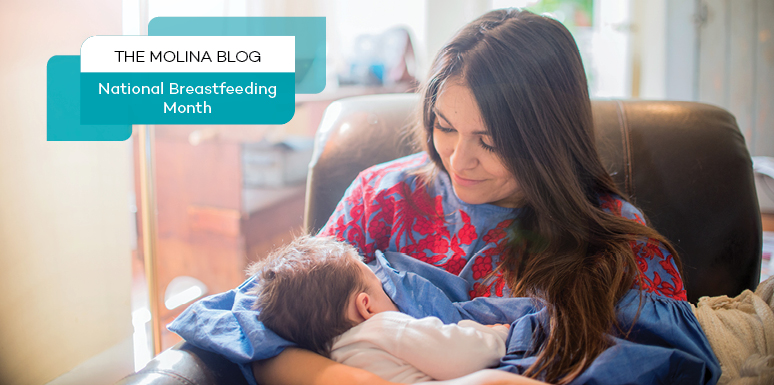August 24, 2023 / Molina Healthcare

Why breastfeed?
Breastfeeding is good for you and your baby and allows you to form a beautiful connection with your baby. It helps keep your baby healthy and strong. Breast milk has nutrients that protect your baby against illnesses. It reduces their risk of diabetes, obesity and asthma. Breastfeeding also helps you recover faster after birth. It can lower your risk of ovarian and breast cancer. It can also help your uterus return to its normal size and help you lose weight.
Your breast milk changes during each feeding to meet the needs of your baby. There are three phases of breast milk.
Colostrum. After birth, your breast will make colostrum. Colostrum is thick and yellow. It is rich in nutrients. It helps protect your baby from infections. It will also help your baby’s digestive system.
Transitional milk. Transitional milk is what your body begins to produce after colostrum. You will start to produce transitional milk two to five days after birth. You may notice your milk change to a bluish-white color.
Mature milk. Your mature milk will come in 10 to 15 days after birth. Mature milk can be thin and watery. The amount of fat in mature milk makes the milk creamier.
What is latching?
Latching on is how your baby attaches to your breast to get milk. Latching is a skill that both you and the baby will learn together.
Most babies will let you know they are hungry by:
Help your baby latch in four simple steps:
Your baby may feed every two to four hours. As your baby grows older and their stomach expands, the amount of time and number of feedings will change. During the first few weeks, your baby will breastfeed about eight to 12 times within 24 hours.
Breastfeeding supplies
The beauty of breastfeeding is that you do not need fancy equipment to breastfeed. There are a few things that can make breastfeeding a lot easier.
Nursing bra - A nursing bra has flaps over each breast. You can open the flaps, so there is no need to remove your entire bra.
Nursing pads - Nursing pads soak up any milk preventing leaks on or through your clothes. They are places inside your bra. Washable or disposable nursing pads are best. Make sure to change your nursing pads often.
Breast pump - A breast pump is a great resource for breastfeeding moms. It offers flexibility with feedings. If you plan to return to work or school, a breast pump is helpful.
Pillows - Pillows make breastfeeding more comfortable. You can use pillows under your arms, elbows, neck or back.
Bottles - Bottles come in handy allowing your partner or family member to feed the baby. To find a bottle that works for your baby, try more than one brand.
Before you decide to breastfeed, speak with your doctor. They will let you know if that is the best option. If you are not able to breastfeed, know that your baby can still grow up to be healthy and strong.
Resources:
https://www.thesource.org/post/10-things-to-know-about-breastfeeding
https://wicbreastfeeding.fns.usda.gov/engorgement
https://wicbreastfeeding.fns.usda.gov/sore-nipples
https://wicbreastfeeding.fns.usda.gov/breastfeeding-supplies
https://www.cdc.gov/nutrition/infantandtoddlernutrition/breastfeeding/what-to-expect.html
Category: Women's Health